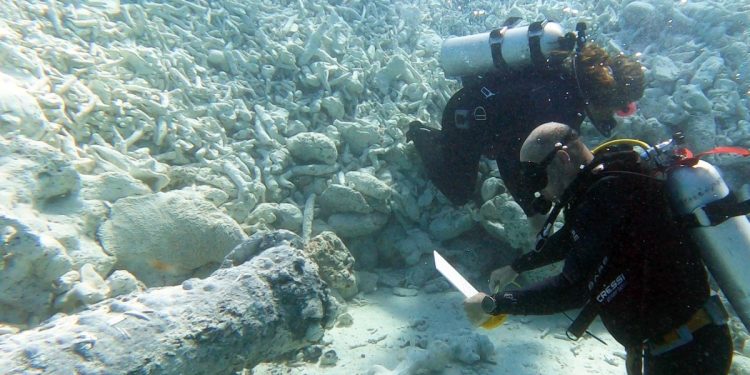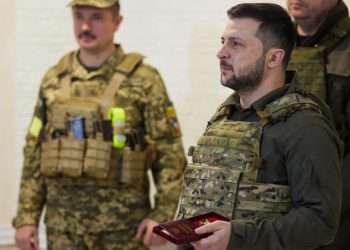An exploration company has unearthed enigmatic Russian cannons in the waters off The Bahamas, prompting inquiries into their origins and the manner in which they ended up at the bottom of Caribbean seas. Some of the 24 individual iron cannons discovered by Allen Exploration (AllenX) date back to the Crimean War in 1853–1855. Given that these cannons were made in Russia thousands of kilometers distant, researchers are perplexed to find them in the northern Bahamas.
How these missiles, which were formerly used by Russia against an alliance that included the Ottoman Empire, France, Britain, and the Kingdom of Sardinia, wound up in the Caribbean is one of the questions that a scientific report on The Bahamas’ “most unexpected underwater revelations,” published in Allen Exploration Ocean Dispatches 6, endeavors to address.
Speaking about how they eventually found these Russian cannons, AllenX called the discovery “striking.” In 2023, the business surveyed the area archaeologically to record the remnants of the Nuestra Señora de la Maravillas, a Spanish galleon. The galleon vanished in 1656, and its debris was discovered strewn over a vast region. The Russian cannons were discovered here by the researchers.
Here, we’ve discovered a wide variety of archaeology. Anything from clay tobacco pipes to thumb-sized amethysts and gold necklaces. But more than 170 years ago, imperial Russian guns fired in rage? Allen stated in a press statement, “That’s astounding.
One of the many firearms discovered had the Russian tsars’ coat of arms, a double-headed eagle, engraved on its barrel. A cannon’s broken-off trunnion, a cylindrical mounting or pivoting point, had a distinctive crest consisting of three lines of Cyrillic writing. Trunnions are often simple, so AllenX was able to pinpoint its origin and trace it back to Russia in the 19th century thanks to the craftsmanship on some of them.
It’s interesting to note that the research team thinks the guns ended up in the Caribbean waters because of a fight conducted years after the Crimean fight. During the Second World War, these cannons were purportedly intended to assist the British in building ships, aircraft, and
Russian artillery from the Siege of Sevastopol were taken home by the British and French after Russia lost the Crimean War. France melted them, but the UK displayed them as memorials. But the British required scrap iron to make other combat gear after the Second World War started. The idea that these guns were imported for the same purpose is probably valid, as records show that Crimean War treasures were frequently utilized to help produce new combat weapons. This assertion is further supported by the finding of cracked barrels among the guns.
Still, a great deal of iron that could have been used was wasted. It’s unclear what became of the additional junk.
“The fate of those metal mountains has remained a profound mystery of World War II Britain to this day,” stated Michael Pateman, director of The Bahamas Maritime Museum and one of the report’s authors, in a press release.
The AllenX team thinks that the most recent finding raises the probability that the authorities transported the excess iron scrap to distant seas in order to conceal the waste.
Still, more investigation is required to determine the precise nature of the incident.







